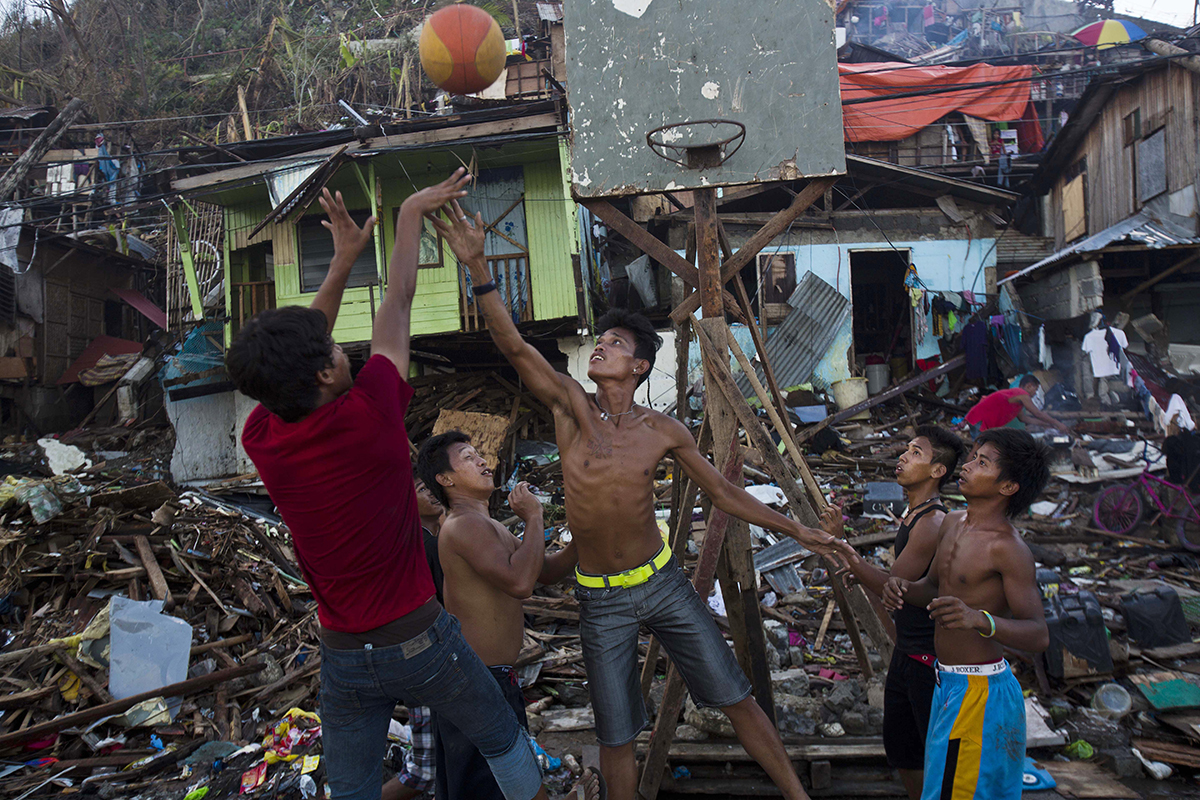
After writing about a group of boys rebuidling their basketball court in the wake of Typhoon Haiyan, AP correspondent Todd Pitman thought about what is lost in coverage of tragedies
It was a heart-wrenching story to cover. I remember visiting a hospital without electricity and finding a mother and father pushing air into the lungs of their newborn daughter with a small hand pump. They knew that if they stopped, their infant would die. After writing about their plight, I checked in on the couple and learned the sad postscript: the baby did not make it.
At times like that, it’s easy to view everything through a lens of despair. Haiyan, after all, was ultimately a tale of tragedy. In that first week of reporting, though, one detail kept making it into my notebook, but not my stories: nearly everybody I met—families who lost everything—greeted me with smiles. Of course they were in pain, and tears welled in their eyes during interviews, but the smiles were part of something I didn’t understand until I stumbled upon a group of boys playing basketball on a patch of broken concrete and dirt—a culture of resilience. Their court, it turned out, had been erected from the ruins of their own homes, and it was one of the first things they rebuilt. After writing a story about this inspiring defiance in the face of disaster, I began thinking about the media’s portrayal not just of tragedy, but also about our role as foreign correspondents. Specifically: Why do we tend to focus so often on the negative? And what are we overlooking when we do?
I began my career nearly two decades ago as a stringer in Burundi, a small Central African nation which was in the midst of a civil war. I moved on to Rwanda and Congo, and joined the AP in West Africa in 2001. I’ve worked all over the globe since then, and covered a lot of bad news along the way—from the wars in Afghanistan and Iraq to natural disasters like the 2011 tsunami in Japan.
Places like Africa and the Middle East are all too often reduced to violent disaster zones
What drives me most is the belief that important things going on in the world need to be shared. But explaining historic events—transporting people through the power of storytelling—carries with it great responsibility. It matters a lot how that “first draft” of history is written, not only because our work influences policymakers, but because it leaves lasting impressions on a public trying to make sense of the world. Often those impressions are negative, though, and places like Africa and the Middle East are reduced to violent disaster zones—a longtime complaint of the people who live there.
My Nieman fellowship has given me the chance to slow down and see how foreign news is projected into the U.S., and the glimpses I see—snapshots of negative news devoid of any sense of normalcy—don’t accurately portray life abroad. I’ve found myself wondering how we can change that.
Steven Pinker, the renowned Harvard psychology professor and author of the 2011 book, “The Better Angels of Our Nature,” argued in a recent campus lecture that violence worldwide is actually at an all-time low. It’s an argument he backs with statistical evidence.
So why does it feel like the world we live in is more dangerous than ever? Part of the answer is, of course, us—the press. When we report on a terrorist attack in Bamako or Beirut or Paris, those tragedies are swiftly transmitted across the planet. Faraway events can feel close, making life appear more tenuous than it really is.
When I asked Pinker about this phenomenon, he suggested the media tone down its coverage of violence. I don’t believe we should ever shy away from devoting resources to covering bad news. But as foreign correspondents, we need to put our coverage into perspective and ask questions that go beyond the casualties: What are we missing? What are we leaving out? And most importantly: Does our reporting reflect the full scope of life in the regions we cover abroad? Where are the painters, the poets—the positive—in what we report?
The news, as fellow Nieman Christa Case Bryant told me, is not just something that happens, it’s what we as journalists decide is important. That’s a crucial point to remember. Because despite the fact that pressures on our industry have cut news budgets worldwide and reduced the number of foreign correspondents, we nevertheless have the power to reach more people than at any other time in history—which is why it matters so much what we say.



